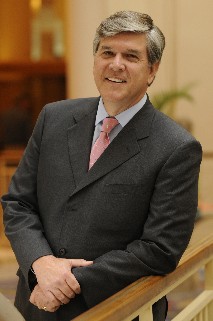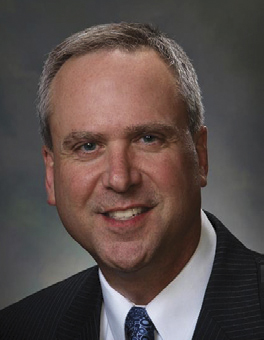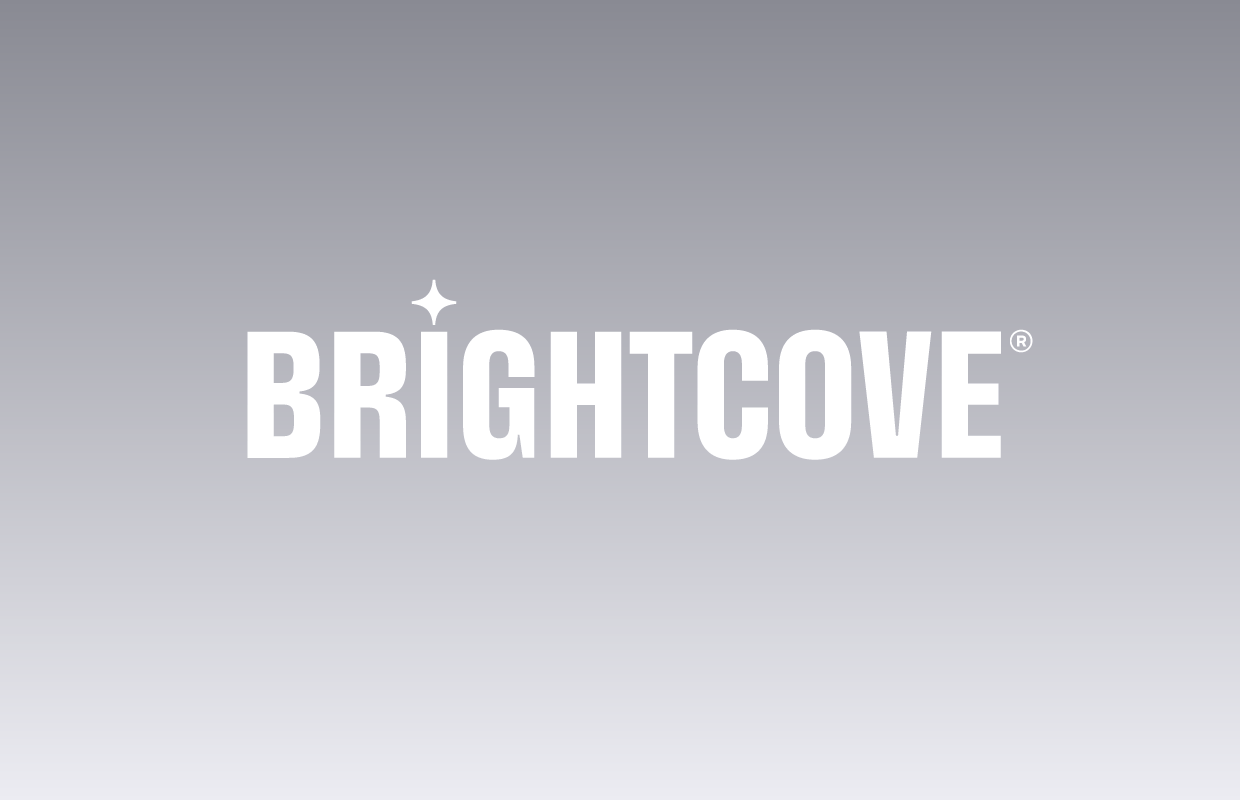A Conversation With Gordon Smith


Tom Butts Editor-in-Chief tbutts@nbmedia.com
To lawmakers on Capitol Hill and regulators in the halls of the FCC, (as well as its membership), Gordon Smith is the face of the U.S. broadcast industry. The former Oregon senator and now president of the National Association of Broadcasters has provided a clear, persistent and determined voice for radio and TV stations both large and small.
His disciplined leadership over the past four years has helped our industry maintain a balanced and consistent presence despite continuous assaults in a rapidly changing regulatory environment and consumer marketplace where the rate of technological change more often than not, vastly outpaces the ability of lawmakers to respond. He’s also a big advocate for moving broadcasting into the next phase of technology in which the ability of consumers to view video anywhere, anyplace, at anytime will dominate.
But while his focus remains on the American marketplace, he also represents U.S. broadcast interests to the world and he visited last month’s IBC Show in Amsterdam to get a taste of how the show operates and to better understand the differences among regional broadcast marketplaces. I got a chance to sit down with him to discuss the latest issues affecting our industry.
The recent retransmission consent battle between CBS and Time Warner Cable was eventually resolved but not before a nasty public fight that laid bare the concerns about being justly compensated for the types of popular programming and information services that broadcasters provide. Despite the cable industry’s arguments that the retransmission environment needs regulatory intervention, Smith indicated that the CBS-TWC dispute was the exception rather than the norm.
“This is a marketplace that works 99.9 percent of the time and that’s not evidence of market failure,” he said. “This is a marketplace that is finding its level and there are undoubtedly economic tensions that occasionally and rarely occur in shutdowns, but they get resolved because there’s a mutuality of interests and vulnerabilities.”
Smith added that with the concept of “equal jeopardy” where both sides have something to lose, broadcasters and cable share mutual interests. “We want cable to succeed,” he said. “We think their packages are more valuable if they have our content, which is the most widely viewed. They conversely would have more trouble selling cable packages without local broadcast content.”
The continuing controversy over the Aereo IP-based mobile video service, in which the New York company is retransmitting local broadcast signals without retransmission consent is still in litigation. The recent court decision shutting down the similar “Filmon.org” online video service means that the current judicial score stands at 2 to 1, with two courts deciding in NAB’s favor, but Smith thinks the issue will eventually end up at the Supreme Court. But he also thinks that broadcasters should not stand still while waiting for a decision and that moving to a mobile future is vital, while remaining vigilant on the copyright issues that are at the heart of the concept of retransmission consent.
The professional video industry's #1 source for news, trends and product and tech information. Sign up below.
“We think, in the end, we will win in court and in the meantime, we are emphasizing the importance of mobile in broadcasting, otherwise you invite more and more into this space, and sort of give a ‘green light’ to their violating copyright law and we don’t want that,” he said.
Perhaps the biggest challenge during Smith’s four years in office has been the issue of spectrum auctions and the ability of the NAB to lobby for protecting broadcast signal integrity. While he says he “would like to say yes” when asked if there are sufficient protections in the current FCC rules, he says the association “reserves the right” to make sure statutory protections are “faithfully observed” by the commission. He also thinks the debate has re-enforced the arguments of the superiority of broadcast technology over broadband.
“There’s this unfortunate tendency to think of broadcasting as ‘yesterday’ and broadband as ‘today and tomorrow,’” he said. “But broadband can never compete with broadcast when it comes to video, because its architecture is fundamentally inefficient as a conveyer of video. Ours becomes, therefore, essential as a medium for getting video to the masses, and in our case, it happens to be free, local, live and large.”
Moving to ASTC 3.0 is vital to the future of the broadcast industry and Smith thinks the industry needs to pick up the pace. “I believe we’re not moving fast enough to ATSC 3.0 or OFDM,” he said. “I think broadcast is at a crossroads where it must decide if it’s going to be a player in a mobile future.”
That also means, for the current transition to the mobile ATSC standard, more broadcasters need to get on board. “I don’t think we fully know now the economic opportunity that comes from mobile, so if the choice is mobile or not mobile and the value proposition today is 50/50, that’s an incomplete consideration of how you ought to proceed on this; it’s that perception that keeps this in slow motion. But notwithstanding the economic uncertainties, a ‘no’ decision is a decision to decline in the telecommunications space. A decision to invest and grow in the mobile space is a decision to hang onto the broadcasting space and I think that’s hugely important.”
I spoke to Smith early in his visit to the IBC Show, so he hadn’t had a chance to formulate any opinion on how the two shows differ, but he added that the NAB is continuously exploring new ways to improve the annual spring event, and is not averse to borrowing an idea or two from other shows. “It’s important that we stay on top of our game, as a show, because it’s number one and we want to keep it that way,” he said.
Finally, in response to a question about the association’s recent announcement that it was moving its headquarters closer to Capitol Hill, Smith noted that because of the difficulties that come with Washington’s notorious traffic when Congress is in session, he was very rarely ever able to travel to Dupont Circle (where NAB has its current headquarters), during his 12 years as a senator.
“It’s time to move,” he said.
Tom has covered the broadcast technology market for the past 25 years, including three years handling member communications for the National Association of Broadcasters followed by a year as editor of Video Technology News and DTV Business executive newsletters for Phillips Publishing. In 1999 he launched digitalbroadcasting.com for internet B2B portal Verticalnet. He is also a charter member of the CTA's Academy of Digital TV Pioneers. Since 2001, he has been editor-in-chief of TV Tech (www.tvtech.com), the leading source of news and information on broadcast and related media technology and is a frequent contributor and moderator to the brand’s Tech Leadership events.

